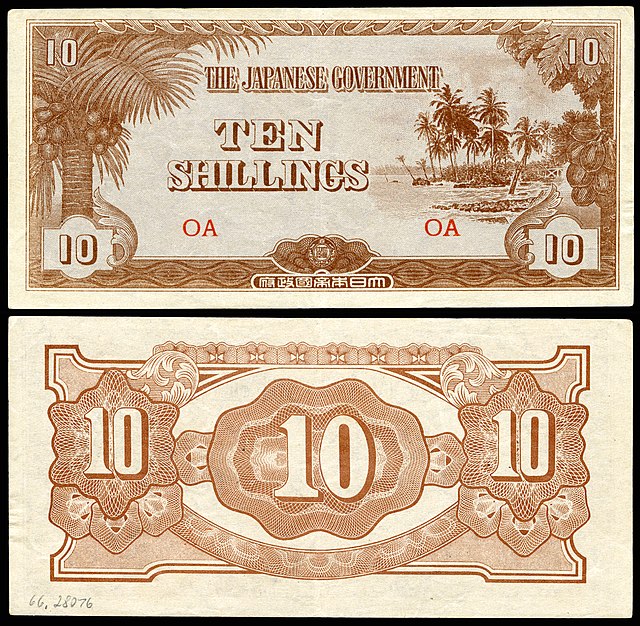Loading AI tools
Part of World War II From Wikipedia, the free encyclopedia
The Japanese occupation of the Solomon Islands was the period in the history of Solomon Islands between 1942 and 1945 when Imperial Japanese forces occupied Solomon Islands during World War II.
This article needs additional citations for verification. (August 2020) |
Japanese-occupied Solomon Islands ソロモン諸島 Soromon-shotō | |||||||||||||
|---|---|---|---|---|---|---|---|---|---|---|---|---|---|
| 1941–1945 | |||||||||||||
| Status | Military occupation by the Empire of Japan | ||||||||||||
| Common languages | Japanese Pijin | ||||||||||||
| Historical era | World War II | ||||||||||||
• Occupation of Solomon | 9 December 1941 | ||||||||||||
• Battle of Guadalcanal begins | 7 August 1942 | ||||||||||||
• Occupation ends | 8 September 1945 | ||||||||||||
| |||||||||||||
| Today part of | Solomon Islands and Bougainville | ||||||||||||
From 1942 to 1943, and even in some islands till 1945, Imperial Japanese Army forces occupied the Solomon Islands where were the headquarters of the protectorate of the British Solomon Islands.
The Solomon Islands campaign was a major campaign of the Pacific War of World War II. The campaign began with Japanese landings and occupation of several areas in the British Solomon Islands and Bougainville Island, in the Territory of New Guinea, during the first six months of 1942. The Japanese occupied these islands and began the construction of several naval and air bases with the goals of protecting the flank of the Japanese offensive in New Guinea, establishing a security barrier for the major Japanese base at Rabaul on New Britain, and providing bases for interdicting supply lines.[1][2]
These islands were part of the Australian Territory of New Guinea, a League of Nations mandate since 1920. Anchoring its defensive positions in the South Pacific was the major Japanese army and navy base at Rabaul, New Britain, which had been captured from the Australians in January 1942. In March and April, Japanese forces occupied and began constructing an airfield at Buka Island in northern Bougainville, as well as an airfield and naval base at Buin, in southern Bougainville.[3]


Both commanding the Seventeenth Army, from Bougainville:
— Kanda surrendered Japanese forces on Bougainville Island to Allied commanders on 8 September 1945.

Seamless Wikipedia browsing. On steroids.
Every time you click a link to Wikipedia, Wiktionary or Wikiquote in your browser's search results, it will show the modern Wikiwand interface.
Wikiwand extension is a five stars, simple, with minimum permission required to keep your browsing private, safe and transparent.